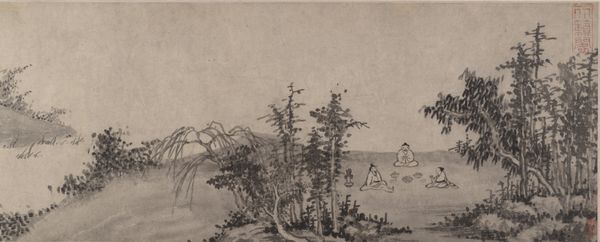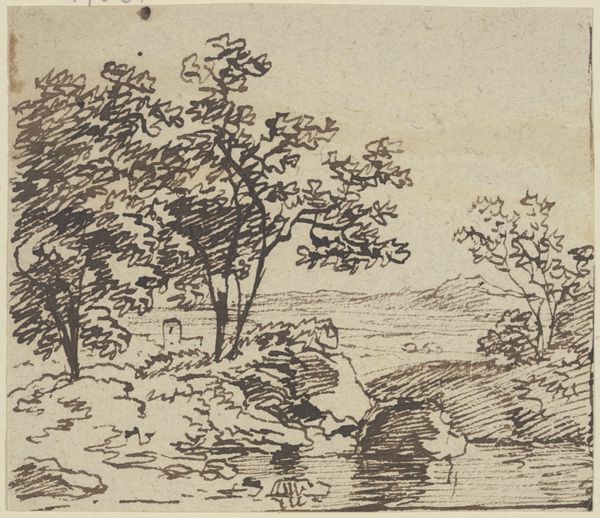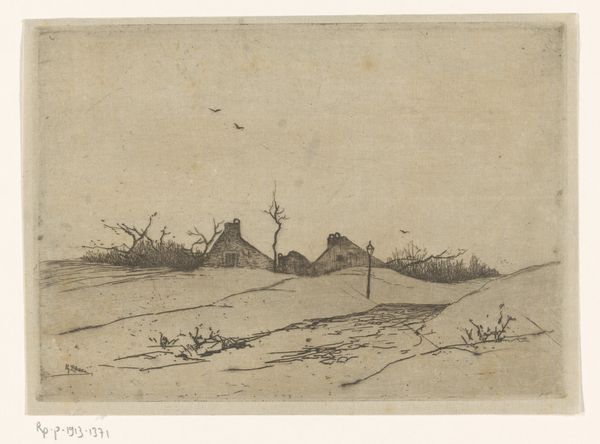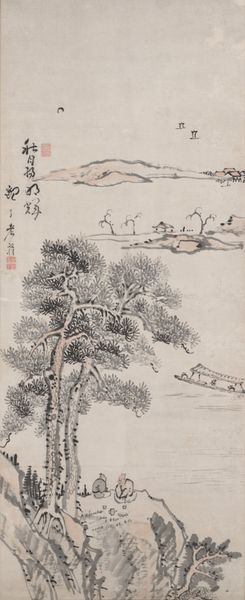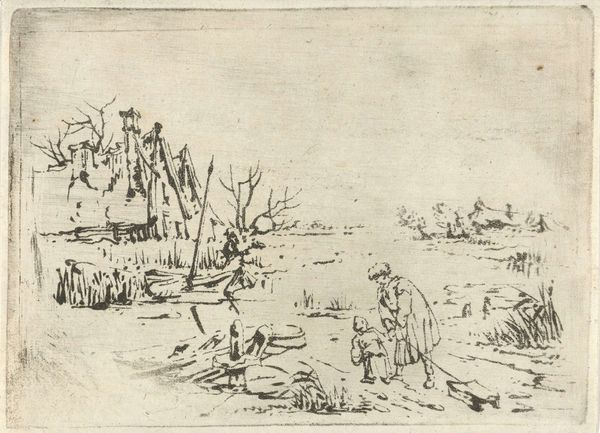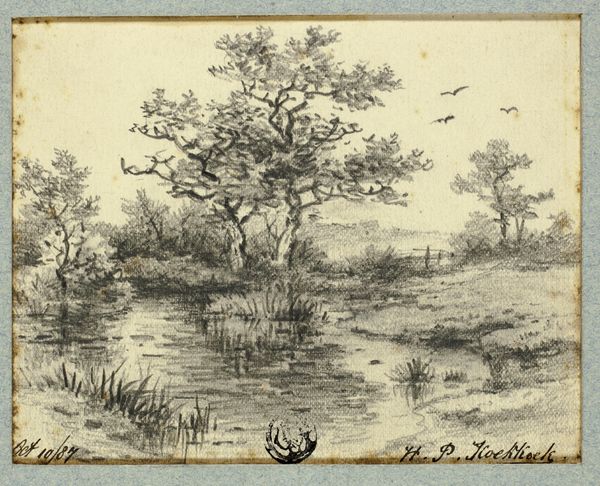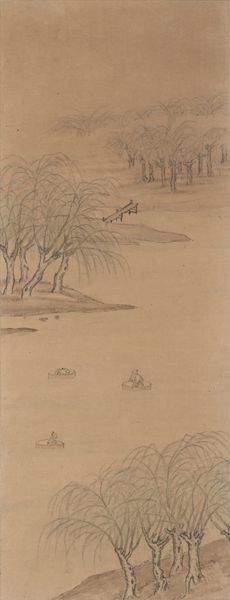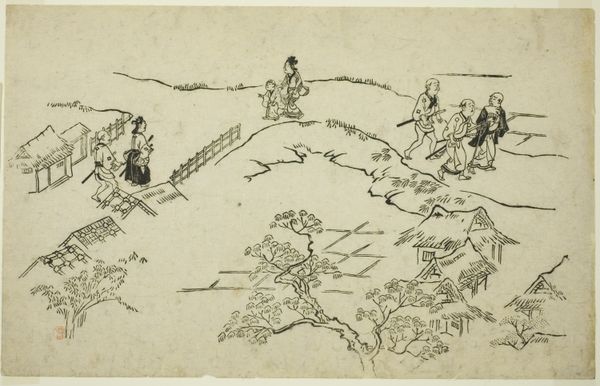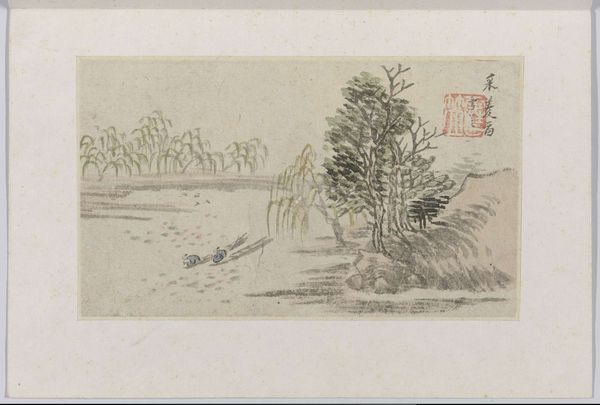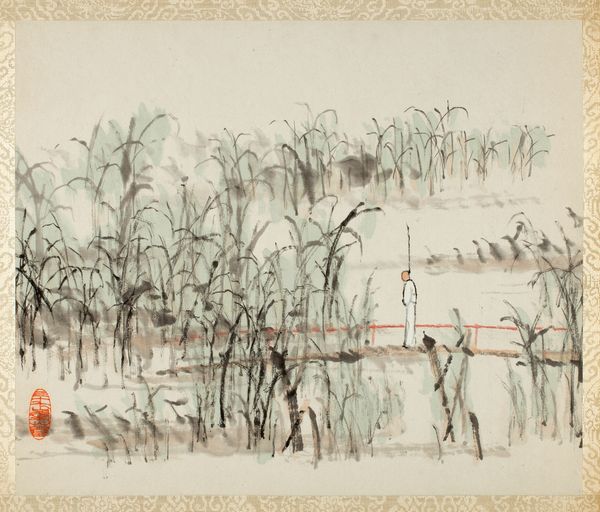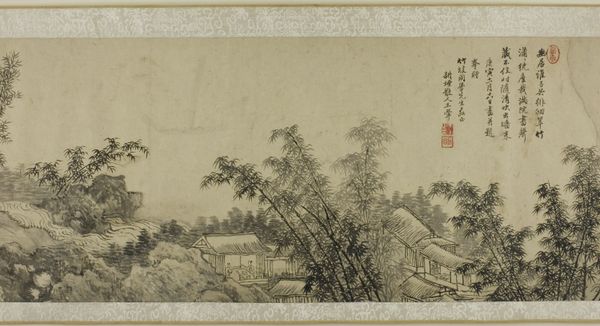
drawing, print, paper, ink, pen
#
drawing
# print
#
landscape
#
paper
#
ink
#
pen
#
realism
Dimensions: 110 × 165 mm
Copyright: Public Domain
Curator: Immediately, the repetition of those vertical lines strikes me, the rhythm they create almost mimics the flow of the water. Editor: And water very much figures prominently in this unnamed drawing, often titled "Stream with Pilings," an ink and pen work on paper by Willem van de Velde the Elder. It is an interesting study of the way human intervention impacts landscape. Curator: Pilings. Such unglamorous materials—they represent human labor in a very direct and physical sense. Were these intended for ship construction, perhaps? The very materiality of them begs so many questions. What wood? How sourced? The labor to install? These all reflect a larger system of resource management. Editor: Precisely. This piece invites us to contemplate the environmental costs that underlie Dutch maritime power during its Golden Age. The waterways teemed with trade, but also the potential disruption and exploitation of natural resources that fueled that power. The placement of the tree suggests something else as well—perhaps resistance to all the work on view here. Curator: And Van de Velde certainly focuses our eye on the manual processes. Look at the differing techniques he employs in the foliage versus the linear depiction of the posts. I’d be curious to explore his choice of pen nib, paper weight, and even the source of his ink. Were they standard? Customized? Each element has agency. Editor: That's astute. Focusing on those material choices opens up a dialogue about how artists historically positioned themselves. It’s as though Van de Velde the Elder wanted to highlight a narrative about Dutch industry—albeit maybe also to ask deeper questions around progress and the effects of the economic imperative. Curator: Absolutely, a consideration that still remains highly resonant in our own age of industry. Thank you for your perspectives. Editor: And thank you. Viewing it through the lens of contemporary anxieties really drives home the enduring relevance of what might seem a very unassuming, simple artwork.
Comments
No comments
Be the first to comment and join the conversation on the ultimate creative platform.
